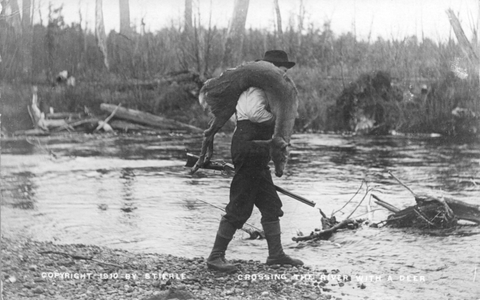Jack Pine Savage Venison Roast Recipe
Nov 07, 2014
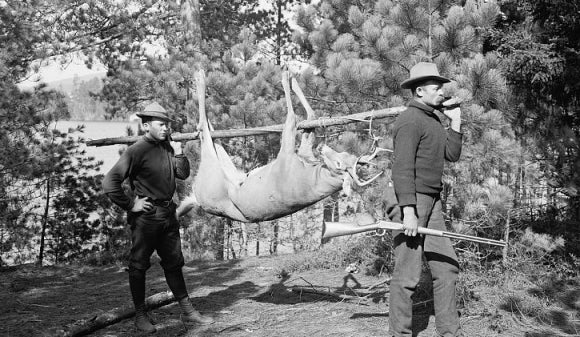
If you are like a lot of modern, suburban men, the venison you have, like other wild game meat, is a prized possession. Deer meat can only be acquired a few months out of the year and if you take into account the few times you may get to hunt and the fewer times you are successful, well, it leaves us with only a few pounds of meat for the year. This isn’t enough to take chances on experimentations with recipes that may not turn out so well. Lucky for us, there were the Jack Pine Savages who ate deer often and were able to do the experimenting for us! Below is a recipe for venison roast, which is pretty similar to the Jack Pine Savage Venison Steak Recipe, with the addition of bacon and beef suet.
For those not familiar, beef suet is a fat that collects around the kidneys of a cow. This fat has a low melting point and can be used in a number of recipes where you might otherwise use bacon grease or shortening. Fat of some kind is usually added to venison because it is such a lean meat. For example, venison sausage recipes typically call for adding in pork sausage or pork fat to the mix.
Here are some images of men and their deer around the time of the Jack Pine Savage. Looking at these always inspires me and reminds me that hunting draws men together like few other sports can. Click on an image for the gallery view.
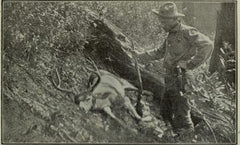

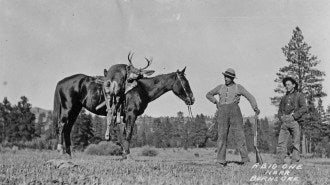
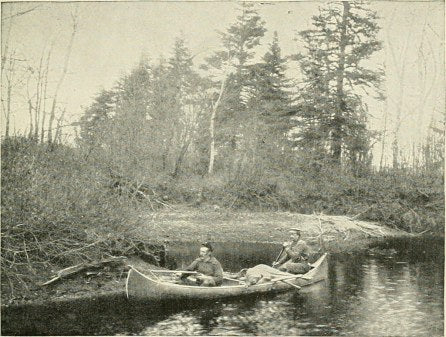
Jack Pine Savage Venison Roast Recipe
Excerpt from the Professional Guide’s Manual (Herter, 1962) Page 202
“I have never known an Indian who would not trade ten times the weight in deer meat for either beef or pork or for that matter, although this may seem strange to you, dog meat, which is also a good meat.
This is the way the old jack pine savages ate their deer roasts and there never has been a method developed half as good.
First, select a good piece of either the rump, round, or standing rib for best results. Trim off all of the skin, fibers, and fat and when I say all of the fat I mean every speck. Work it out of the meat with your fingers if necessary. Deer fat is not good to eat and its taste spoils the taste of the meat.
Make a formula enough to cover the roast of:
- ½ vinegar
- ½ water
- 1 Tbsp. salt for every quart of water
- 8 bay leaves
- 8 whole cloves
Take the point of your Bowie or Bull Cook Knife and run it into the meat every square inch to leave the liquid penetrate. Leave the roast stand in this liquid for 24 hours. Remove and drain off the liquid. Rinse lightly in cold water and dry off meat with a cloth. Put the roast where it is cold or in the freezer for an hour or two until the meat is cold and firm. Salt and pepper the roast well.
Get a piece of beef suet from your butcher and some bacon. Cut both in pieces about 3 inches long and one-fourth to half inch thick. Take your Bowie or Bull Cook Knife and push the point of it down into the top of the roast, then push forward on the knife blade making and opening in the back of it. Push the pieces of suet and bacon down into the meat as far as you can. Do this once to every square inch of the roast. It takes a little practice to get the knack of this. Now lay strips of both beef suet and bacon on top of the roast completely covering the top. Then place in roasting pan.
Put about one fourth of an inch or so of water in the bottom of the pan. Roast in a slow oven 325 degrees F. until done. Do not overcook as overcooked venison is tough and dry. Baste frequently with juice from the bottom of the pan and keep the level of juice up to a fourth of an inch or more. If necessary add more water. It will take about 25 minutes or more per pound to cook your roast.
You can roast onions, carrots, celery, potatoes and rutabagas with your roast if you desire. Roasting vegetables with the venison helps to keep it from drying out.
Always serve venison on a hot plate as it gets tallow when it is cool.”
Check out the Professional Guide’s Manual in the open library here or grab a copy from eBay.
What do you think? Is this similar to how you cook your deer roast? Let us know in the comments below!
Hunt Often and Eat Well!
– Yarbrough

